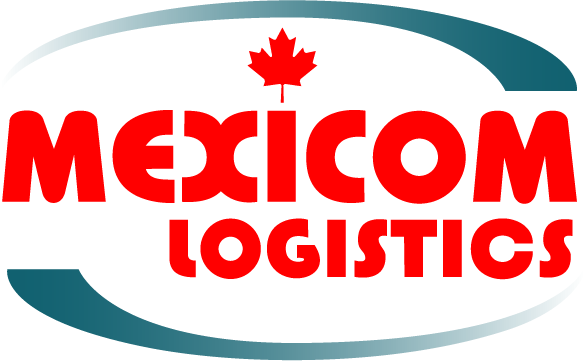[Infographic ] Why US and Canadian firms are moving manufacturing from Asia to Mexico? What is Nearshoring?

Mexico advances as a manufacturing location
In recent years, the world has suffered the vulnerability and risks of distant global sourcing strategies. The U.S.- China trade war, the pandemic, and even environmental disasters tied to climate change have disrupted the supply and demand patterns and have highlighted those vulnerabilities. Additionally, some political issues have been added to the equation, such as disputes related to accusations of espionage and diplomatic relations with Hong Kong.
Governments and companies have shown the need of diversifying their providers and plant locations. One of the first steps of Biden’s administration was to order a review of U. S. supply chains, with the objective of decreasing U.S. dependence on Chinese production of semiconductor manufacturing, critical minerals pharmaceuticals, and other critical inputs.
Firms in the U.S. and Canada started to develop regional sourcing alternatives, that involve production capacity and consumption within geographic blocs.
“Such blocs can largely be drawn to encompass a breadth of capabilities and resources — for example a North American bloc that includes the U.S., Canada, Mexico, and parts of Central America that can together offer large markets, skilled as well as low-cost labor, and relatively lower transport distances and costs. Similarly, one can envision a European bloc that draws on Eastern Europe and North Africa for low-cost labor.” – Harvard Business Review
U.S. and Canadian companies have seen Mexico as a more cost-effective option to strengthen their operation resilience due to its easy proximity.
Big players such as Foxconn – the biggest electronic manufacturer worldwide- have significantly expanded their Mexican manufacturing operations in recent years. Foxconn is Apple’s leading supplier for the manufacture of iPhone devices and hardware producer for Sony, Google, and other companies. The multinational has been gradually increasing its production capacity outside of China. The multinational operates 3 facilities in Mexico. Its factory in Tijuana, Mexico, is considered a supply hub for the U.S. state of California.
There are many other examples of companies that have their manufacturing facilities in Mexico.
Mexico is the 4th largest exporter of auto parts in the world and the first in automotive industry exports in the U.S. Manufacturing companies such as BMW, Honda, Mazda, Nissan, Toyota, and Volkswagen have plants in the Mexican territory. Mexico is also the 5th largest exporter of appliances in the world. Sony, Whirlpool, GE, Danby, and EMZ are examples of household manufacturing companies in Mexico.
Aerospace manufacturing in Mexico also continues to grow. Bombardier, Safran, Airbus, and Delta among others, have plants in Queretaro, Mexico. Mexico is also home to medical device manufacturing clusters. Firms such as 3M, Siemens, Medtronic, GE, and Kimberly Clark have manufacturing plants in Mexico.
What is nearshoring?
“Nearshoring is a tactic that allows companies to move their operations to the closest country with a qualified workforce and reduced cost of living without the time difference.” – Forbes
Advantages of nearshoring in Mexico
The USMCA trade pact provides incentives for integrated North American trade and production bloc.
Mexico is a country with highly skilled labor abilities, employees in Mexico follow high education standards at the same time that are cost-effective.
Mexico offers strong protection of Intellectual Property rights.
Labor costs in Mexico are lower than in Canada and the U.S.
Due to the country’s proximity, manufacturing in Mexico leads to lower transportation costs and shorter transit times.
A challenge of Nearshoring to Mexico
Regulations and specific processes to transport goods across the US- Mexico border.
Freight transport between the U.S. and Canada and relatively simple. However, transporting goods from or to Mexico can be complex. There are additional steps and specific procedures to cross freight across the Mexico-U.S. border. That is why it is important to count on a logistics partner, such as Mexicom Logistics. Mexico Logistics guides its customers through the Mexico-U.S. cross-border freight transportation process to help run supply chains in North America smoothly.
Sources:
https://hbr.org/2022/03/are-the-risks-of-global-supply-chains-starting-to-outweigh-the-rewards
https://insights.tetakawi.com/top-6-mexican-manufacturing-industries
https://www.forbes.com/sites/forbestechcouncil/2021/05/27/beyond-outsourcing-how-to-get-started-with-nearshoring/?sh=468c5c861799



![[Infographic ] Why US and Canadian firms are moving manufacturing from Asia to Mexico? What is Nearshoring? [Infographic ] Why US and Canadian firms are moving manufacturing from Asia to Mexico? What is Nearshoring?](https://mexicomlogistics.com/wp-content/uploads/bfi_thumb/dummy-transparent-qmy27ecj1ko1plcszcxguosvh2jrc880u5swuo0z3s.png)






